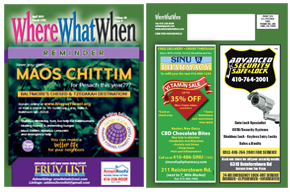As Pesach approaches, I often think about my Great Aunt Cele and the Seders she held for my family in the 1950s on Cylburn Avenue. Aunt Cele was never married, but she was the matriarch of our family. She treated her nieces and nephews like they were her own children. And her great nieces and nephews were a special joy for her.
With great
passion, Aunt Cele held on to the tradition of her parents, who came from Kovna
Geberna in Russia. I don’t know what Seders were like for her growing up, but
for me they were the highlight of every year. At the Seder, adorned in my
favorite dress and shiny, black Mary Jane shoes, I sat on one side of
Aunt Cele, while my brother Julian, in his brown suit-like attire, sat on her
other side. Across from us were my mother and father, and at the head of the
table sat my Uncle Nate, Aunt Cele’s brother, who led the Seder in his lyrical
Hebrew.
Each of us had
our own kiddush cup. My brother’s and mine were tiny glass ones. Each cup sat
on a white plate with a painted flower design in the middle. I believe those
plates had belonged to Aunt Cele’s parents, my great-grandparents. Also, we
each had our own Haggadah. For Julian and me, they were small booklets with
colorful pictures to make the story come alive.
The aroma of
chicken soup, roast, and tzimmes warming in the kitchen, drifted into the
dining room. Soon we would eat on the white plates with tiny flowers in the
middle. But, I wasn’t in a rush to eat because the Seder was too magical to
miss.
From the
beginning of the Seder, when Uncle Nate broke the middle matzah and slipped
half of it into a white silk bag, Aunt Cele would start
plotting with Julian and me how we
might grab that bag with the afikomen. During the Seder, she explained the
meaning of everything, from reciting the Four Questions to removing tiny drops
of wine or grape juice from our cups in remembrance of the plagues to taking
our first bites of matzah that didn’t have time to rise when the Jews left
Egypt to tasting the brown charoses, which my brother had helped Uncle
Nate grind in the basement before the Seder.
Throughout it
all, Aunt Cele kept reminding us to think where Uncle Nate might have hid the
afikomen. We knew that once we found it, we would get gifts in exchange for
giving it back. Of course, with Aunt Cele’s encouragement (aided by Uncle
Nate), we always found it. My brother and I could hardly stand still as we held
up the silk bag with the afikomen needed to complete the Seder. My parents,
across from us, beamed at our excitement. And behind it all was Great Aunt
Cele, who, as quickly as the next week, gave us our gifts for finding the
afikomen.
The first
afikomen present that I remember was a puppy, a cute, beige-colored terrier
that we named Buttons. I’m sure my parents gave their okay beforehand, however
Buttons soon chewed up my father’s slippers and left puddles all over in our
rowhouse on Shirley Avenue. We kept Buttons for only two weeks. We were sorry
to give him back but always remembered the afikomen gift that was a puppy.
As a teacher
for many years at Pimlico Elementary School, Aunt Cele (known as Miss Block)
made sure that many of the afikomen gifts were educational. I remember when she
gave us a new game called Scrabble. We might have been the first on the block
to have it. And of course, she gave us books – like a large blue one called
Mother Goose Rhymes for Jewish Children. It had short verses about Jewish
life including the holidays, easy to learn and recite.
As I got older,
the most important afikomen gift that Aunt Cele gave me was my first Chumash.
It wasn’t like the Chumash I read today. But Pathways Through the Bible,
a thick green tome written all in English with unusual drawings, played an
important role in my life, although I didn’t start reading it until years
later. I kept this Jewish Bible on the shelf in my bedroom while I was a
commuter to Towson State College (now Towson
University).
At that time, I
was struggling with some emotional problem that I don’t even remember. One
evening, I took down Pathways Through the Bible from the shelf and
started reading it. Every night, I read a different chapter – first about Adam
and Eve, Noah and the ark, and then Abraham who believed in one G-d. As I read
each story, I started to feel better. I knew that there was something special
about this book, a Jewish Bible, that Aunt Cele had given to me years earlier
as my afikomen present.
At her Seders,
Aunt Cele gave us more than tangible gifts. She shared her joy at being Jewish,
of following the laws of Torah and believing in one G-d, the Creator of the
Universe, who took us out of Egypt and commanded us to recall that experience
every year at a Seder.
About 40 years
ago, Aunt Cele flew down to Atlanta to share Pesach with my young family, who
was following in her footsteps. Not long after that, she passed away. After she
died, my mother, one of her favorite nieces, who often visited her, found a box
among her belongings labeled “Passover dishes for Ruby.” She sent the box down
to Atlanta, and when I opened it, I recognized those flowered dishes that we
used at the Seders when I sat next to Great Aunt Cele at her home on Cylburn
Avenue growing up in Baltimore in the 1950s.






